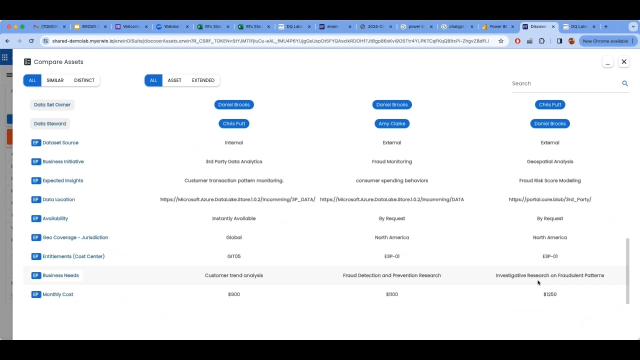Managing Third-Party Data in erwin Data Marketplace Quick Tour Video
 02:40
02:40
Related videos
Introducing erwin Data Marketplace
Take a look at this quick overview to see how erwin Data Marketplace, available within erwin Data Intelligence, delivers a simple way for all data users across ...
02:45
Why Your Business Needs a Data Marketplace
If you’re like most organizations, you've been working with limited data in isolation and building reports with only basic context. It's time to consider a data...
20:11
Delivering a data supermarket at VOSKER
Hear how erwin by Quest customer VOSKER aligned data investments with business strategy to deliver a data supermarket leveraging erwin Data Marketplace, part of...
37:37
erwin Data Marketplace – a Sandhill Consultants Fireside Chat
View this 30-minute Sandhill Consultants Fireside Chat between Robert Lutton, Vice President of Sandhill Consultants, and Susan Laine, Chief Field Technologist ...
30:45
erwin Data Marketplace by Quest Quick Tour
Get a closer look at erwin Data Marketplace by Quest in this 7-minute software tour. See how it can help you democratize data and empower all data users across ...
06:26
Using erwin Data Intelligence for AI Governance Quick Tour Video
Excerpted from the erwin by Quest Speeding Data Product Delivery on-demand webcast, view this 8-minute video to see how model curation and governance inside erw...
07:52
Shopping for Data Products in erwin Data Marketplace Quick Tour Video
Excerpted from the erwin by Quest Speeding Data Product Delivery on-demand webcast, view this 12-minute demo to see how your organization’s data consumers...
11:33
